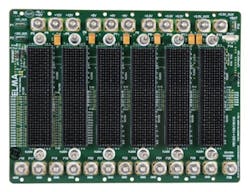MOUNTAIN VIEW, Calif., 29 June 2011.Satellite electronics designers at Aurora Flight Sciences Corp. in Manassas, Va., will develop a flight algorithm to help enable separate orbiting space satellite modules to work together wirelessly and function as one monolithic satellite system under terms of a $5 million contract awarded Monday by the NASA Ames Research Center in Mountain View Calif., in behalf of the U.S. Defense Advanced Research Projects Agency (DARPA) in Arlington, Va.The contract is part of the DARPA System F6 program to demonstrate fractionated satellite technology, which functions on orbit as a cluster of separate modules connected wirelessly and sharing their resources similarly to a traditional satellites that integrate their separate subsystems on one large spacecraft.The ideal behind fractionated satellite technology is to create orbiting satellite clusters that are more adaptable and survivable than traditional monolithic satellites, shortening development time, and reducing the barrier to entry for aerospace companies to participate in the national security space industry, DARPA officials say.
The Aurora Flight Sciences contract is for six months with two one-year options. The company will develop open-interface standards and help create a fractionated satellite technology development ecosystem in which aerospace companies might be able to develop components for distributed satellite architectures based on open-systems industry standards.
A key program of the System F6 program is to publish industrywide open-systems interface standards to help industry develop and maintain future fractionated satellite systems, DARPA officials say. For further information on this contract or the System F6 program, contact NASA contract specialist Marla Lefevre by e-mail at [email protected].
For more information contact the NASA Ames Research Center online at www.nasa.gov/centers/ames, or DARPA at www.darpa.mil.
